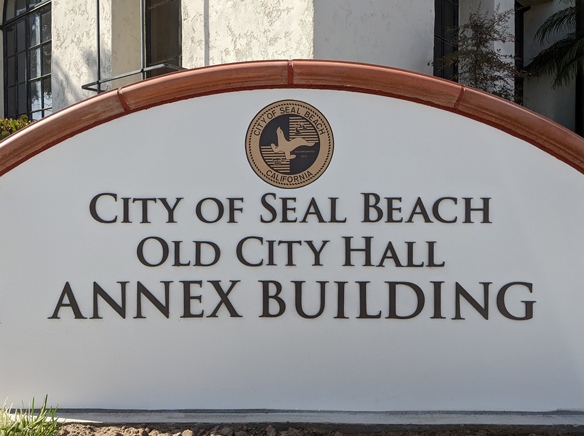Staff updated the council this week on the Seal Beach General Plan. The state mandates updates to different sections of the plan (called “elements”) at regular intervals. The state also mandates an annual progress report on the General Plan. The deadline: April 1. The council basically received and filed the report, which city staff will now submit to the California Housing and Community Development Department.
“The General Plan is a state-mandated document, which serves as the blueprint for the City of Seal Beach’s future development, and is comprised of a series of Elements covering different topics,” wrote Smittle in her staff report.
She said General Plans “are really kind of cool.”
Smittle told the council that Seal Beach has eight “elements” to its current plan, with a ninth recently added: the Environmental Justice Element.
“All of these are state mandates,” Smittle said.
The California Housing and Community Development Department apparently told the city that the Annual Progress Report should focus on larger activities. According to Smittle’s report, some of the highlights in 2022 included:
“Initiation of a capital improvement project at the Seal Beach Tennis and Pickleball Center;
“Successful advocacy for Federal funding for sand replenishment
“Substantial staff support for the I-405 widening project,” Smittle wrote.
“While the City is continually taking action to implement all aspects of the General Plan, the Housing Element continues to be in the forefront of policy making at the State level. As a reminder, the Housing Element defines the City’s strategy to (a) plan for existing and projected housing demand, (b) identify adequate sites to accommodate the City’s allocated share of regional housing needs, and (c) analyze local policies, regulations and requirements that have the potential to constrain development of housing for all income levels,” Smittle wrote.
“The City’s current RHNA [Regional Housing Needs Assessment] requirements are for a total of 1,243 units; with 258 of them being affordable to very low-income households, 201 affordable to low-income households, and 239 affordable to moderate-income households,” Smittle wrote.
“From January 1, 2022, to December 31, 2022, most housing applications were for the demolition and rebuilding of existing units. In 2022, only one net new unit was completed,” Smittle wrote.
“As in past years, no development applications proposed units specifically restricted to low- or very low-income households,” Smittle wrote.
“This is not unusual, as opportunities for affordable housing are typically associated with larger multifamily residential developments and not individual single-family projects,” Smittle wrote.












